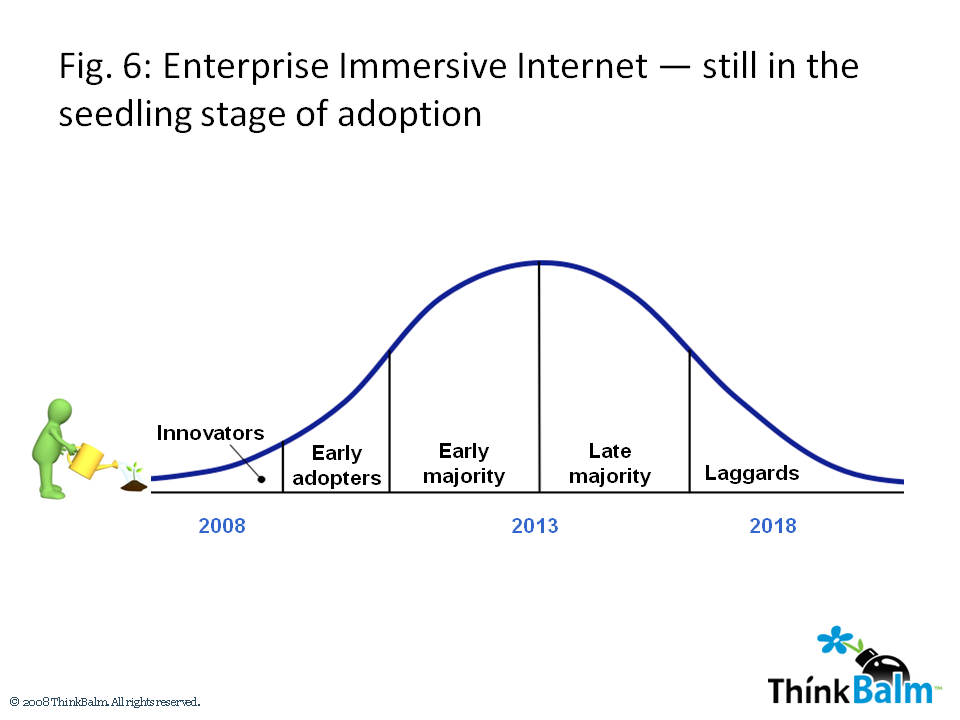The non-profit Social Research Foundation recently announced the results of its Second Life Annual Survey 2008, a Web-based survey of 1,258 Second Life residents who are part of the organization’s First Opinions Panel™. Thanks to Social Research Foundation, ThinkBalm was able to contribute a few questions about work-related usage of Second Life. Here are some findings from the survey, which was fielded in September of 2008.
Most residents surveyed don’t use Second Life for work
Only about a sixth of the 1,258 survey respondents (16%) say they use Second Life for business purposes related to their primary occupation (see Figure 1). The vast majority (84%) say they do not. And use of Second Life for professional activities including training is down slightly in 2008 vs. 2007 (see Figure 2). While 16% of the 1,258 respondents say they are doing more professional activity in Second Life this year compared to last year, 19% say they are doing less.
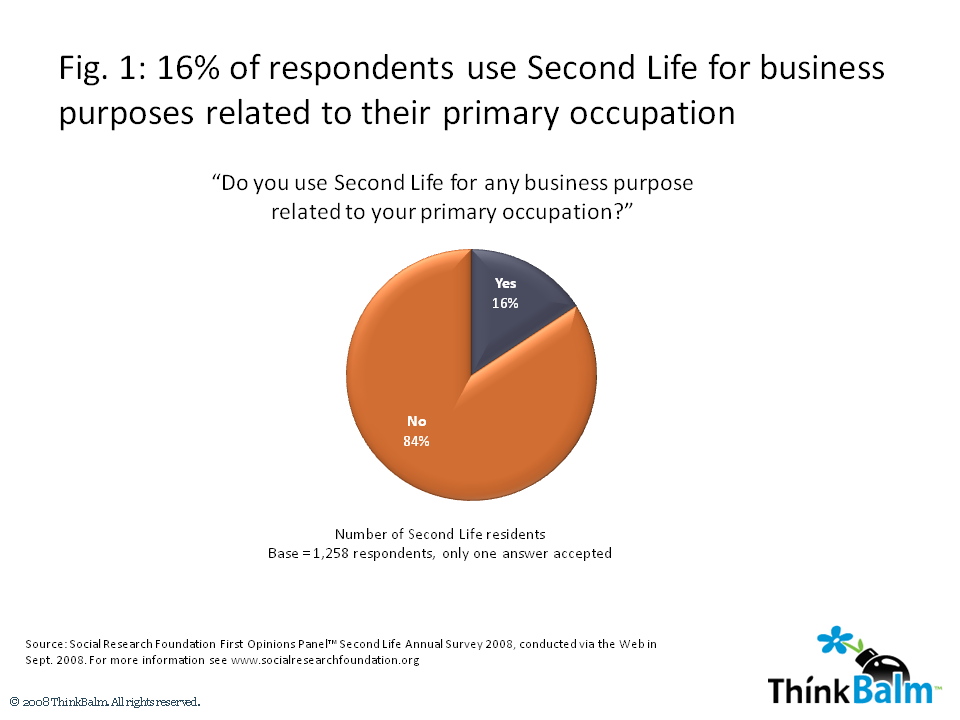
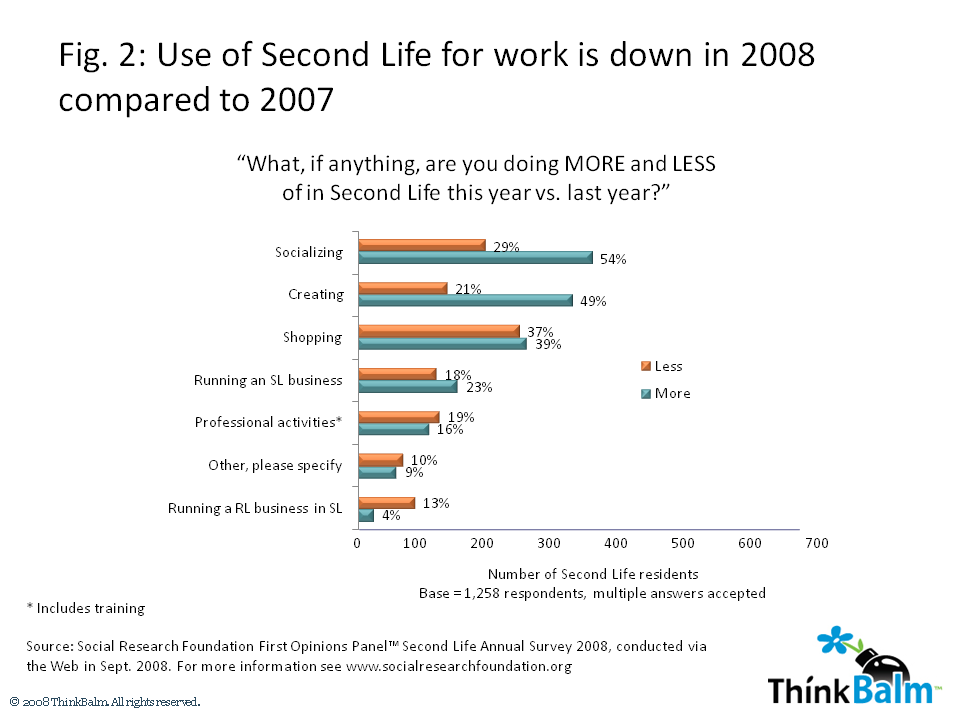
But of those who use Second Life for work, more than 1/3 indicate they use it mostly for that purpose
More than 1/3 (71, or 36%) of the 198 respondents who use Second Life for activities related to their primary occupation say that more than half of their time spent in Second Life is job-related (see Figure 3). Of these, 29 (15%) say they spend half to three quarters of their in-world time on work-related activities and 42 (21%) say they spend three quarters to all of their in-world time this way. Most respondents (125, or 63%) spend half or less of their time in Second Life working.
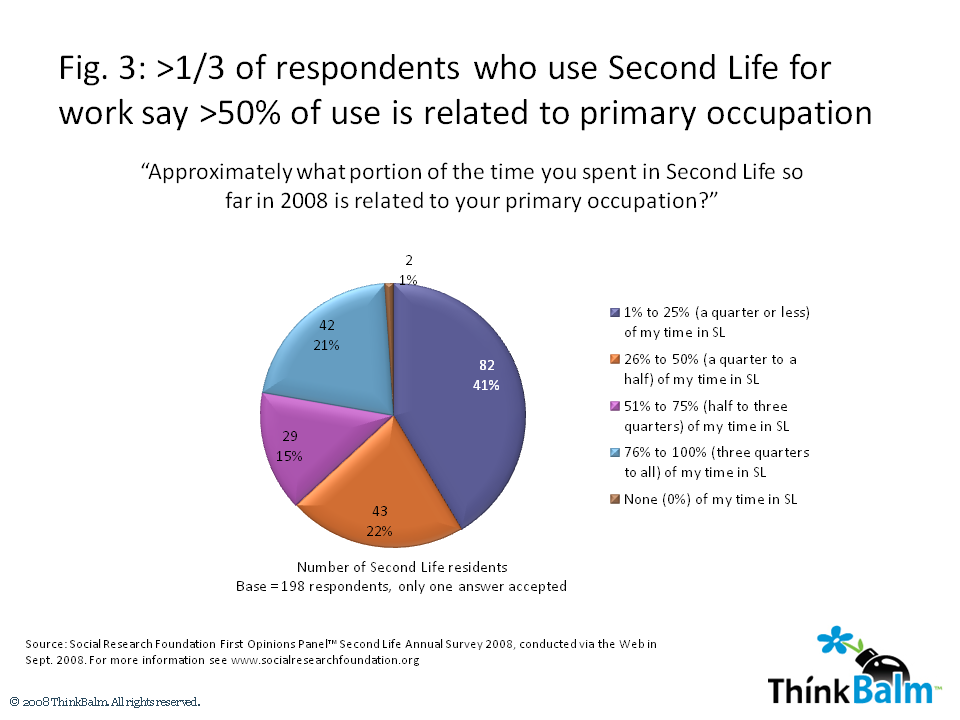
The most common work-related uses: teaching/learning, collaboration, and meetings
The most common professional uses of Second Life are teaching and/or learning, collaboration, and meetings (see Figure 4). These findings reflect what we have seen anecdotally, and not just in Second Life. These are the most common enterprise Immersive Internet use cases regardless of technology used.
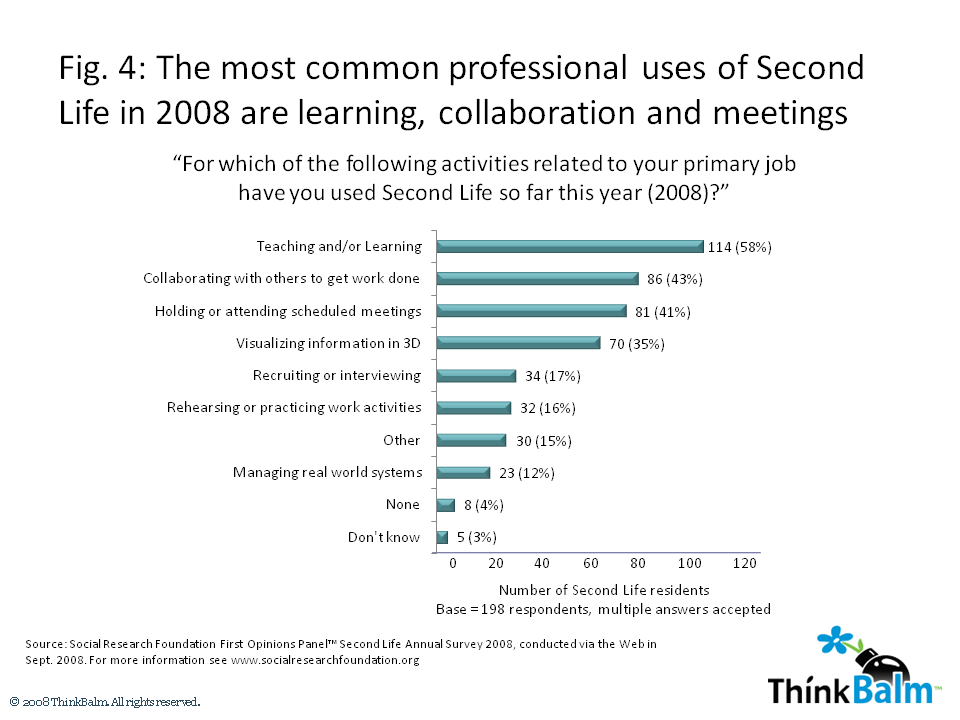
- As was expected . . . Of the 198 survey respondents who say they use Second Life for work-related purposes, 114 (58%) say they use Second Life for teaching and/or learning and 32 (16%) use it for a related purpose: to rehearse or practice business activities. Eighty six (43%) say they use it for collaborating with others to get work done and 81 (41%) say they use it to hold or attend scheduled meetings.
- But there were surprises. We are surprised to see that as many as 70 respondents (35%) are using Second Life to visualize information in 3D. 3D data and concept visualization will emerge as killer apps for immersive technology in 2009 and 2010 because they allow us to do things we simply can’t in the physical world or with flat 2D technology. We were also surprised to see that as many as 34 (17%) respondents are using Second Life for recruiting or interviewing and 23 (12%) are using it to manage real-world systems. We expected these numbers to be much lower.
People who do use Second Life for work expect to keep on doing so in 2009
Ninety nine (50%) of the 198 respondents who use Second Life for work-related purposes in 2008 expect to spend more time on work-related activities in Second Life in 2009 (see Figure 5). Another 60 (30%) expect the amount of time to remain about the same. Only 18 respondents (10%) expect to decrease the amount of time they spend working in Second Life in 2009.
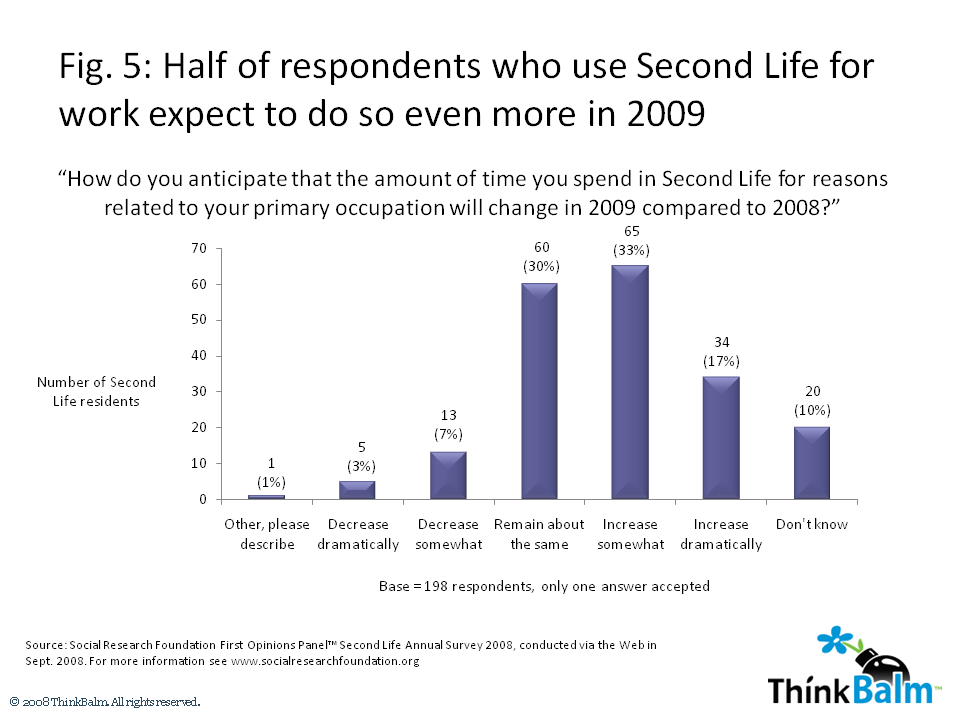
What it means for Immersive Internet advocates and implementers
- Deliver first-hand experiences to new users whenever possible. People who get hands-on experience using an immersive environment for work tend to see the value in it, and plan to use it more in the future. This highlights the importance of providing first-hand experiences to prospective users as part of the evangelism effort. Without actually using an immersive environment to get real work done, it’s hard for many people to comprehend its impact. You can always start with the common use cases, like learning & training and meetings and collaboration.
- Remember: this survey data is only about Second Life. This data does not show us what is going on with experimentation and adoption of other enterprise immersive platforms. (ThinkBalm is tracking about two dozen enterprise immersive platform vendors.) While the question of which enterprise immerisve platforms an organization is using isn’t addressed at all in these survey questions, we’ve seen anecdotal evidence that sometimes an enterprise project team experiments in Second Life and then uses another platform, one designed for enterprise use, for bigger pilots or production projects.
- 2008 is a landmark year for enterprise adoption of the Immersive Internet. While self-reported overall use of Second Life for work-related purposes dropped slightly in 2008 compared to 2007, expected use is going up — a lot. While the industry is currently in the “seedling” stage of adoption, ThinkBalm foresees that enterprise use will be mainstream in five years (see Figure 6). The main reasons for this area 1) convergence of hardware, software, and network bandwidth, which make immersive technologies accessible on a widespread basis, 2) the prevalence of social networking, which allows Immersive Internet experts and advocates to find each other and share ideas, learnings, and best practices, and 3) an economic downturn, which will favor IT investments that result in hard dollar cost savings.
